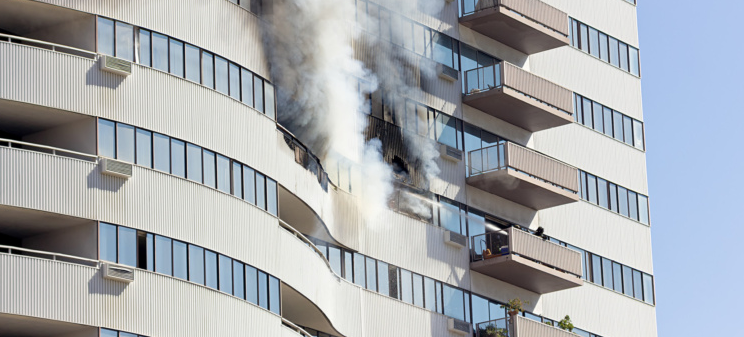A Room By Room Guide To Combustible Cladding In Your Home

As the name suggests, combustible cladding is a type of material that is used in the construction of buildings and is highly flammable. It is usually made from polyethene or polystyrene and is used as an insulation material.
In the event of a fire, combustible cladding can cause the fire to spread quickly and can lead to serious damage to property and loss of life.
Although it is not a legal requirement to have your home assessed for combustible cladding, it is strongly recommended that you do so. This is especially true if you live in a high-rise building.
In this article, we will guide you through a room-by-room guide to combustible cladding in your home. Plus, we will let you know how to spot it, how to assess your home, and how to fix it without damaging your home.
How to spot combustible cladding
If you want to find out if your home has combustible cladding, there are several signs that it could be present.
The first thing you need to do is look at the outside of your property. If you see any kind of textured coating on your walls or roof, this could indicate that combustible cladding is present.
Another sign is when you have a plastic-coated wall or roof, which may have been installed in the last 20 years. If this is the case, then it’s likely that you need an assessment by a professional contractor who will be able to tell you exactly what type of material has been used.
Finally, if you notice flammable materials such as foam insulation being installed on top of existing walls or roofs, then this is another sign that combustible cladding may be present in your property.
How to assess your home for combustible cladding
The first thing you need to do is assess your home for combustible cladding. There are two ways to do this:
The first is to phone your local council and ask them if they have any information on the property. If they don’t know, they should be able to give you contact details for the building surveyor who inspected your property when it was built. The second way is to check the building regulations certificate (BRC) at the time of purchase. This will list all materials used on your property and whether they comply with current fire regulations.
If you can’t find either of these documents, then the next step would be to ask around your neighbours or other residents in your block.
You can also carry out an online search of your address and see what comes up in relation to combustible cladding, although this might not be as reliable as asking someone who lives nearby who knows more about local conditions than you do.
How can I fix it?
If you have combustible cladding in your home, you should get it removed as soon as possible. This can be done by installing a non-combustible material such as drywall or plasterboard.
If this is not possible, then you should consider having the whole building inspected by a qualified fire engineer. The engineer will be able to identify areas where combustible cladding has been used and advise on the best way to deal with them.
In some cases, it may be possible for the existing cladding to be removed and replaced with non-combustible materials such as plasterboard or drywall. In other cases, however, it will not be safe to remove the original cladding and so it will need to be covered up with a protective layer of non-combustible material such as plywood or metal sheeting.
Conclusion:
Combustible cladding poses a serious threat to you and your family in the event of a fire. If you are concerned about the safety of your home, please contact us for more information on how we can help.














